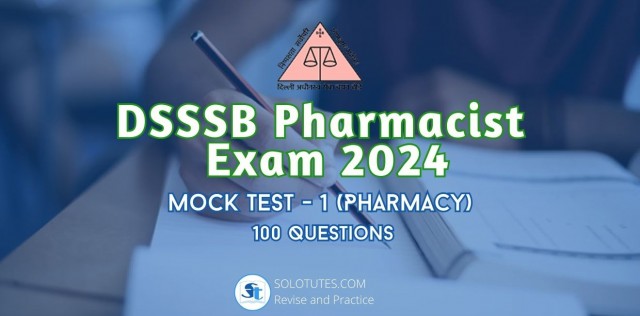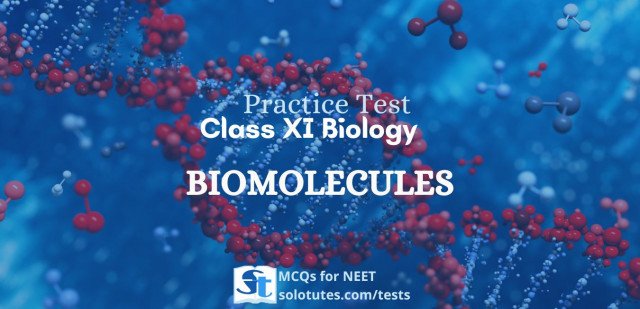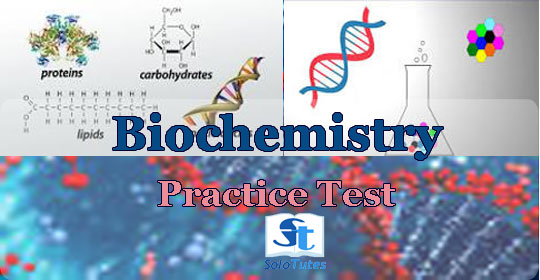Biochemistry One Liners
Biochemistry Important One Liners Questions On Mineral Metabolism
〉
--
Biochemistry Important One Liners Questions On METABOLISM OF Nucleotides oneliners
〉
--
Biochemistry Important One Liners Questions On METABOLISM OF AMINO ACIDS oneliners
〉
--
Biochemistry Important One Liners Questions On Metabolism of Lipids
〉
--
Biochemistry Important One Liners Questions On Metabolism of Carbohydrates
〉
--
Biochemistry Important One Liners Questions On Biological Oxidation
〉
--
Biochemistry Important One Liners Questions On HEMOGLOBIN AND PORPHYRINS
〉
--
Biochemistry Important One Liners Questions On Nucleic Acids and Nucleotides
〉
--
Biochemistry Important One Liners Questions On PLASMA PROTEINS
〉
--
Biochemistry Important One Liners Questions On digestion and absorption
〉
--
Biochemistry Important One Liners Questions On Proteins and amino acids
〉
--
Biochemistry Important One Liners Questions On enzymes
〉
--
Biochemistry Important One Liners Questions On Vitamins
〉
--
Biochemistry Important one liner Questions on carbohydrates
〉
--
Biochemistry Important One Liner Questions on Lipids
〉
--
Biochemistry Practice MCQs
1 of 210
Q.1 The function of iron is
- Formation of bones and teeth
- Control excitability of nerves
- Regulates the permeability of membranes
- Transport of oxygen to tissue
Answer ✔ (D)
Explanation: Iron is essential element for blood production. Haemoglobin is essential for transferring O2 in blood.
Pharmacy • B. Pharma • Biochemistry • Pharmacist Competitive Exams • DSSSB Pharmacist
2 of 210
Q.2 Cobalt is a component of :
- vitB6
- Vit A
- Vit B12
- Vit D
Answer ✔ (A)
Explanation: Cobalt is the active centre of co-enzyme called cobalamine.
Pharmacy • B. Pharma • Biochemistry • Pharmacist Competitive Exams • DSSSB Pharmacist
3 of 210
Q.3 Alkaline phosphate level is increased in
- Ricket
- Leukemia
- Cardial infection
- Pancreatic deficiency
Answer ✔ (A)
Explanation: Ticket is a disease of growing bone that is unique to children and a dietary deficiency of calcium or phosphorous.
Pharmacy • B. Pharma • Biochemistry • Pharmacist Competitive Exams • DSSSB Pharmacist
4 of 210
Q.4 Microcytic hyper chronic anaemia occurs due to deficiency of
- Cu2+
- Co2+
- Zinc
- Iron
Answer ✔ (D)
Pharmacy • B. Pharma • Biochemistry • Pharmacist Competitive Exams • DSSSB Pharmacist
5 of 210
Q.5 Normal urine is
- Neutral
- Highly acidic
- Slightly alkaline
- Slightly acidic
Answer ✔ (D)
Explanation: Urine contains high concentration of urea and other substances including toxins.
Pharmacy • B. Pharma • Biochemistry • Pharmacist Competitive Exams • DSSSB Pharmacist
6 of 210
Q.6 Milky type colour of urine gets elevated in
- Albimins
- Haemoglobin
- Fatty acid
- Nephritis
Answer ✔ (C)
Explanation: Milky type colour of urine is indication of UTI.
Pharmacy • B. Pharma • Biochemistry • Pharmacist Competitive Exams • DSSSB Pharmacist
7 of 210
Q.7 A component of coenzyme A is
- Inosine
- Thiamine
- Pethothenic acid
- Pyridoxine
Answer ✔ (C)
Explanation: Pethothenic acid is called vitamin B5. Animals require penthoneic acid to synthesise coenzyme A.
Pharmacy • B. Pharma • Biochemistry • Pharmacist Competitive Exams • DSSSB Pharmacist
8 of 210
Q.8 Hyperlipidemia is excess of
- Cholesterol and triglycerides
- Free fatty acids
- Glucose
- Ketone bodies
Answer ✔ (A)
Explanation: Hyperlipidemia is excess of lipids which means Cholesterol and triglycerides.
Pharmacy • B. Pharma • Biochemistry • Pharmacist Competitive Exams • DSSSB Pharmacist
9 of 210
Q.9 Out of these amino acid which one is not essential amino acid?
- Proline
- Tryptophan
- Tyrosine
- Histidine
Answer ✔ (A)
Explanation: Proline is not essential amino acid.
Pharmacy • B. Pharma • Biochemistry • Pharmacist Competitive Exams • DSSSB Pharmacist
10 of 210
Q.10 Which one is essential amino acid
- Alanine
- Leucine
- Proline
- Tryptophan
Answer ✔ (C)
Explanation: Proline is an essential amino acid.
Pharmacy • B. Pharma • Biochemistry • Pharmacist Competitive Exams • DSSSB Pharmacist
11 of 210
Q.11 Polypeptide chain number can be identified by treatment of protein with
- Barium chloride
- Mercuric chloride
- Nitric acid
- Dansyl chloride
Answer ✔ (D)
Explanation: Because dansyl chloride reacts with the free amino group of peptides and proteins.
Pharmacy • B. Pharma • Biochemistry • Pharmacist Competitive Exams • DSSSB Pharmacist
12 of 210
Q.12 Isoelectric pH of pepsin is
- 4.6
- 4.7
- 1.1
- 11.0
Answer ✔ (C)
Pharmacy • B. Pharma • Biochemistry • Pharmacist Competitive Exams • DSSSB Pharmacist
13 of 210
Q.13 Methionine enkephalin is chain
- Dipeptide
- Tripeptide
- Tetra peptide
- Pentapeptide
Answer ✔ (D)
Explanation: It consist of five amino acid linked together and attached to a fatty acid to enhance oil solubility.
Pharmacy • B. Pharma • Biochemistry • Pharmacist Competitive Exams • DSSSB Pharmacist
14 of 210
Q.14 Plasminogen is converted to plasma with the help of enzyme
- Streptokinase
- Amylase
- Aldolase
- Acid phosphatase
Answer ✔ (A)
Explanation: Streptokinase is an enzyme secreted by several species of streptococcus.
Pharmacy • B. Pharma • Biochemistry • Pharmacist Competitive Exams • DSSSB Pharmacist
15 of 210
Q.15 Thiamine includes which one of the following chemical nucleus
- Pyrimidine and thiazole
- Pyrrole and furan
- Imidazole
- Acid phosphatase
Answer ✔ (A)
Explanation: Thiamine is also known as VitB1, found in virtually all food.
Pharmacy • B. Pharma • Biochemistry • Pharmacist Competitive Exams • DSSSB Pharmacist
16 of 210
Q.16 Biotin structure is formed by fusion of
- Imidazole and thiophene ring
- Imidazole and furan rings
- Imidazole and insoles ring
- Imidazole and purine rings
Answer ✔ (A)
Explanation: Biotin has two rings fused together via one of their sider.
Pharmacy • B. Pharma • Biochemistry • Pharmacist Competitive Exams • DSSSB Pharmacist
17 of 210
Q.17 1 kilobase in DNA is equal to the
- 10 base pair
- 100 base pair
- 1 base pair
- 1000 base pair
Answer ✔ (D)
Explanation: 1 kilobase in DNA is equal to the 1000 base pair.
Pharmacy • B. Pharma • Biochemistry • Pharmacist Competitive Exams • DSSSB Pharmacist
18 of 210
Q.18 Which one is not the type of RNA
- mRNA
- iRNA
- tRNA
- rRNA
Answer ✔ (B)
Explanation: iRNA is not the type of RNA
Pharmacy • B. Pharma • Biochemistry • Pharmacist Competitive Exams • DSSSB Pharmacist
19 of 210
Q.19 Which of the following RNA have high concentration in cell?
- mRNA
- tRNA
- rRNA
- None of the above
Answer ✔ (B)
Explanation: tRNA has L-shaped 3D structure because it has primary, secondary and tertiary structure.
Pharmacy • B. Pharma • Biochemistry • Pharmacist Competitive Exams • DSSSB Pharmacist
20 of 210
Q.20 An example of transferase enzyme
- Lipase
- Hexokinase
- Esterase
- Urease
Answer ✔ (B)
Explanation: It is an enzyme which phosphorylase hexose into hexose phosphate.
Pharmacy • B. Pharma • Biochemistry • Pharmacist Competitive Exams • DSSSB Pharmacist
21 of 210
Q.21 Appropriate percentage of carbon in protein is the range of
- 10-20%
- 20-30%
- 30-40%
- 50-55%
Answer ✔ (D)
Pharmacy • B. Pharma • Biochemistry • Pharmacist Competitive Exams • DSSSB Pharmacist
22 of 210
Q.22 Appropriate percentage of sulphur in protein is the range of
- 0-4%
- 4-8%
- 8-12%
- 12-16%
Answer ✔ (A)
Pharmacy • B. Pharma • Biochemistry • Pharmacist Competitive Exams • DSSSB Pharmacist
23 of 210
Q.23 An example of amino acid which does not contain sulphur is
- Aspartic acid
- cystine
- Methionine
- Cysteine
Answer ✔ (A)
Explanation: Aspartic acid does not contain sulphur in it.
Pharmacy • B. Pharma • Biochemistry • Pharmacist Competitive Exams • DSSSB Pharmacist
24 of 210
Q.24 Main ring present in histidine amino acid is
- Pyrrole
- Imidazole
- Furan
- Thiophene
Answer ✔ (B)
Pharmacy • B. Pharma • Biochemistry • Pharmacist Competitive Exams • DSSSB Pharmacist
25 of 210
Q.25 Main ring present in tryptophan is
- Indole
- Imidazole
- Furan
- Thiophane
Answer ✔ (A)
Pharmacy • B. Pharma • Biochemistry • Pharmacist Competitive Exams • DSSSB Pharmacist
26 of 210
Q.1 Optimum temp at which denaturation of protein takes place is
- 10
- 20
- 40
- 50
Answer ✔ (D)
Explanation: Optimum temp at which denaturation of protein takes place is 50
Biochemistry • Pharmacist Competitive Exams
27 of 210
Q.2 ATPase enzyme is associated with metal ion
- Na+ and K+
- Mg2+ and Ca2+
- Co2+ and K2+
- Mn2+ and Ca2+
Answer ✔ (A)
Explanation: ATPase enzyme is associated with metal ion Na+ and K+
Biochemistry • Pharmacist Competitive Exams
28 of 210
Q.3 Enolase enzyme is associated with metal ion
- Mn2+
- Co2+
- Mg2+
- Cu2+
Answer ✔ (C)
Explanation: Enolase is present in all tissues and organisms and is capable of glycolysis and fermentation.
Biochemistry • Pharmacist Competitive Exams
29 of 210
Q.4 Metal ion present in pyruvate oxidase enzyme
- Cu2+
- Co2+
- Mg2+
- Mn2+
Answer ✔ (D)
Explanation: Metal ion present in pyruvate oxidase enzyme is Mn2+
Biochemistry • Pharmacist Competitive Exams
30 of 210
Q.5 Metal ion present in xanthine oxidase enzyme
- Mn2+
- Mo2+
- Cu2+
- Ca2+
Answer ✔ (A)
Explanation: xanthine oxidase is a enzyme which generate reactive oxygen.
Biochemistry • Pharmacist Competitive Exams
31 of 210
Q.6 Metal ion present in cytochrome oxidase is
- Iron and copper
- Molybdenum
- Manganese
- Calcium
Answer ✔ (A)
Explanation: Metal ion present in cytochrome oxidase is Iron and copper.
Biochemistry • Pharmacist Competitive Exams
32 of 210
Q.7 The enzyme which contains more than one polysaccharides chain is
- Monomeric enzyme
- Oligomeric enzyme
- Ligase
- Lyase
Answer ✔ (B)
Explanation: Oligomeric enzyme that contains two or more polypeptide chains associated with non-covalent forces.
Biochemistry • Pharmacist Competitive Exams
33 of 210
Q.8 Lysozyme enzyme contain number of amino acids
- 10
- 20
- 30
- 129
Answer ✔ (D)
Explanation: Lysozyme are known as muromidase.
Biochemistry • Pharmacist Competitive Exams
34 of 210
Q.9 Active site of enzyme is called as
- Catalytic site
- Denaturation
- Clefts
- Oligomeric
Answer ✔ (A)
Explanation: Active site is the small part an enzyme where substrate molecules bind and undergo a chemical reaction.
Biochemistry • Pharmacist Competitive Exams
35 of 210
Q.10 Drug that is not as dihyrofolate reductase inhibitor
- Allopurinol
- Methotrexate
- Aminoprotein
- Amethoprotein
Answer ✔ (A)
Explanation: Allopurinol is used in treatment of gout, high level of uric acid in body.
Biochemistry • Pharmacist Competitive Exams
36 of 210
Q.11 Drug acting as acetylcholine inhibitor
- Acetylcholine
- Succinylcholine
- Dicumarol
- Lovastatin
Answer ✔ (B)
Biochemistry • Pharmacist Competitive Exams
37 of 210
Q.12 Drug acting HMG-CoA reductase inhibitor?
- Propanalol
- lovastatin
- Captopril
- Alluprinol
Answer ✔ (B)
Explanation: lovastatin is a hypolipidemic agent that belongs to the statins class
Biochemistry • Pharmacist Competitive Exams
38 of 210
Q.13 Coenzyme derived from vitamin
- Allopurinol
- Captopril
- Riboflavin
- Pyridoxine
Answer ✔ (C)
Biochemistry • Pharmacist Competitive Exams
39 of 210
Q.14 Therapeutic application of enzyme streptokinase
- In cancer therapy
- Gene transfer
- In embolous
- Cheese preparation
Answer ✔ (C)
Explanation: Therapeutic application of enzyme streptokinase In embolous.
Biochemistry • Pharmacist Competitive Exams
40 of 210
Q.15 Lipase enzyme is used for estimation of
- Uric acid
- Triacylglycerol
- Cholesterol
- Urea
Answer ✔ (B)
Biochemistry • Pharmacist Competitive Exams
41 of 210
Q.16 Enzyme urease is used for estimation of :
- Glucose
- Urea
- Uric acid
- Cholesterol level
Answer ✔ (B)
Explanation: Urease is an enzyme that catalyse hydrolysis of urea into carbon dioxide and ammonia.
Biochemistry • Pharmacist Competitive Exams
42 of 210
Q.17 Elevated serum level of amylase is used in diagnosis of disease
- Meningitis
- Acute pancreatitis
- Blood pressure
- Jaundice
Answer ✔ (B)
Biochemistry • Pharmacist Competitive Exams
43 of 210
Q.18 Increased in level of SGPT is used in diagnosis of disease
- Hepatitis
- Rickets
- Heart attacks
- Alcoholism
Answer ✔ (A)
Explanation: Hepatitis is defined by inflammation of liver.
Biochemistry • Pharmacist Competitive Exams
44 of 210
Q.19 Increased in level of SGOT is used in diagnosis of disease
- Acute pancreatitis
- Myocardial infarction
- Hepatitis
- Alcoholism
Answer ✔ (A)
Explanation: Increased in level of SGOT is used in diagnosis of disease Acute pancreatitis.
Biochemistry • Pharmacist Competitive Exams
45 of 210
Q.20 The major site of fat digestion is
- Large intestine
- Small intestine
- Kidney
- Liver
Answer ✔ (B)
Explanation: Fats are digested using enzyme lipase through small intestine.
Biochemistry • Pharmacist Competitive Exams
46 of 210
Q.21 The fats are :
- Completely insoluble in water
- Sparingly soluble in water
- Completely soluble in water
- Both a and b
Answer ✔ (D)
Biochemistry • Pharmacist Competitive Exams
47 of 210
Q.22 Fatty acids synthesis occurs in
- Cytoplasm
- Mitochondria
- heart
- Lungs
Answer ✔ (A)
Explanation: Fatty acids synthesis occurs in Cytoplasm.
Biochemistry • Pharmacist Competitive Exams
48 of 210
Q.23 Ergosterol consists of
- 28 carbon atoms
- 30 carbon atoms
- 14 carbon atoms
- 35 carbon atoms
Answer ✔ (A)
Biochemistry • Pharmacist Competitive Exams
49 of 210
Q.24 Lipogenesis is the formation of
- Glucose from fat
- Fat from glucagen
- Fats from glucose
- Glycogen from fats
Answer ✔ (A)
Biochemistry • Pharmacist Competitive Exams
50 of 210
Q.25 Lipids are organic substance which are
- Insoluble in water
- Soluble in water
- Soluble in alcohol
- Both a and c
Answer ✔ (D)
Explanation: Lipids are organic substance which are soluble in water and alcohol.
Biochemistry • Pharmacist Competitive Exams
51 of 210
Q.1 The glycolytic pathway is the
- Conversion of pyruvic acid into oxaloacetate
- Degradation of glucose into pyruvic acid
- Successive oxidation - reduction reaction involving succinate NADH
- None of these
Answer ✔ (B)
Explanation: The glycolytic pathway is the degradation of glucose into pyruvic acid
Pharmacy • B. Pharma • Biochemistry • Pharmacist Competitive Exams
52 of 210
Q.2 Oxidative phosphorylation is the generation of
- Phosphoglyceric acid
- Pyruvic acid
- ATP
- ADP
Answer ✔ (C)
Explanation: It is the metabolic pathway in which mitochondria in cells use their structure, enzymes and energy released by oxidation.
Pharmacy • B. Pharma • Biochemistry • Pharmacist Competitive Exams
53 of 210
Q.3 The term lipolysis is used for
- Breakdown of lipids
- Biosynthesis of lipids
- Accumulation of lipids in the body
- Inherited metabolic disorder of lipids
Answer ✔ (D)
Explanation: The term lipolysis is used for breakdown of lipids
Pharmacy • B. Pharma • Biochemistry • Pharmacist Competitive Exams
54 of 210
Q.4 Milky fluid containing emulsified fat in small intestine is known as
- Lymph
- Blood
- Chyle
- Chyme
Answer ✔ (C)
Explanation: Chyle is milky fluid containing emulsified fat in small intestine.
Pharmacy • B. Pharma • Biochemistry • Pharmacist Competitive Exams
55 of 210
Q.5 The amino acid which contains guanidino group is
- Cysteine
- Methionine
- Arginine
- cystine
Answer ✔ (C)
Pharmacy • B. Pharma • Biochemistry • Pharmacist Competitive Exams
56 of 210
Q.6 Hyperlipidemia is excess of
- Cholesterol and triglyceride
- Free fatty acids
- Glycerol
- Ketone bodies
Answer ✔ (A)
Explanation: Hyperlipidemia involves abnormality in which Cholesterol and triglyceride gets elevated.
Pharmacy • B. Pharma • Biochemistry • Pharmacist Competitive Exams
57 of 210
Q.7 The RNA synthesis on a DNA template is known as
- Translation
- Transduction
- Replication
- Transcription
Answer ✔ (D)
Explanation: The RNA synthesis on a DNA template is known as Transcription.
Pharmacy • B. Pharma • Biochemistry • Pharmacist Competitive Exams
58 of 210
Q.8 Deamination of amino acids occurs during the
- Anabolism of amino acid
- Catabolism of amino acid
- Formation of urea
- Krebs cycle
Answer ✔ (C)
Explanation: Deamination of amino acid is the process by which amino acid are broken down into ammonia. Ammonia is toxic so its converted into urea or uric acid.
Pharmacy • B. Pharma • Biochemistry • Pharmacist Competitive Exams
59 of 210
Q.9 Blood platelets are rich in
- Carbohydrates
- Cholesterol
- Phospholipids and protein
- Nucleic acids
Answer ✔ (C)
Explanation: Blood platelets are rich in Phospholipids and protein.
Pharmacy • B. Pharma • Biochemistry • Pharmacist Competitive Exams
60 of 210
Q.10 Increase in number of erythrocytes
- Poikilocytosis
- Reticulocytes
- displacia
- Polycythemia
Answer ✔ (D)
Explanation: Polycythemia is a state in which the proportion of blood volume that is occupied by RBC increases.
Pharmacy • B. Pharma • Biochemistry • Pharmacist Competitive Exams
61 of 210
Q.11 Treatment of iodine with starch shows
- Blue
- Red
- Green
- Red
Answer ✔ (A)
Explanation: Treatment of iodine with starch shows Blue.
Pharmacy • B. Pharma • Biochemistry • Pharmacist Competitive Exams
62 of 210
Q.12 Which test is used for distinguishing monosaccharides?
- Bebedicts
- Tollens
- Barfoeds
- Ninhydrin
Answer ✔ (C)
Explanation: Barfoeds test is based on the reduction of copper acetate to copper oxide which forms brick red colour.
Pharmacy • B. Pharma • Biochemistry • Pharmacist Competitive Exams
63 of 210
Q.13 Drug which is used in the treatment of tuberculosis from glycosidic class
- Isoniazid
- Ethambutol
- Streptomycin
- Pyrizinamide
Answer ✔ (C)
Explanation: Streptomycin is an antibiotic drug called aminoglycosides.
Pharmacy • B. Pharma • Biochemistry • Pharmacist Competitive Exams
64 of 210
Q.14 which compound is used as reference carbohydrate for rotation determination
- Glyceraldehyde
- Glucose
- Fructose
- Maltose
Answer ✔ (A)
Explanation: Glyceraldehyde is a triose monosaccharides and is simple of all aldoses.
Pharmacy • B. Pharma • Biochemistry • Pharmacist Competitive Exams
65 of 210
Q.15 Glucose and galactose are epimers to each other with reference to
- C2
- C3
- C4
- C1
Answer ✔ (C)
Pharmacy • B. Pharma • Biochemistry • Pharmacist Competitive Exams
66 of 210
Q.16 D-glucose corresponding alcohol is
- D- Sorbitol
- D-Ribitol
- D-Mannitol
- D-Dulcitol
Answer ✔ (A)
Explanation: It is also known as glucitol sugar which is a sugar alcohol.
Pharmacy • B. Pharma • Biochemistry • Pharmacist Competitive Exams
67 of 210
Q.17 Starch is hydrolysed by enzyme
- Lactose
- Amylase
- Aldolase
- Phosphatase
Answer ✔ (B)
Explanation: The pancreas and salivary gland make amylase hydrolyse dietary starch into disaccharide and trisaccharide.
Pharmacy • B. Pharma • Biochemistry • Pharmacist Competitive Exams
68 of 210
Q.18 Which carbohydrate is exclusively used in kidney functioning test
- Lactose
- Sucrose
- Fructose
- Insulin
Answer ✔ (D)
Explanation: Insulin is helpful during kidney functioning.
Pharmacy • B. Pharma • Biochemistry • Pharmacist Competitive Exams
69 of 210
Q.19 Monosaccharides are called as
- Simple sugar
- Complex sugar
- Common sugar
- Lactose sugar
Answer ✔ (A)
Explanation: Monosaccharides are the most basic unit of sugar and thus are called as simple sugar.
Pharmacy • B. Pharma • Biochemistry • Pharmacist Competitive Exams
70 of 210
Q.20 In TCA oxaloacetate is formed from
- Fumarate
- L-ketoglutarate
- Succinate
- Malate
Answer ✔ (D)
Explanation: It is an enzyme that reversibly catalysed by oxidation of malate into oxaloacetate.
Pharmacy • B. Pharma • Biochemistry • Pharmacist Competitive Exams
71 of 210
Q.21 Heparin is a
- Monosaccharide
- Disaccharide
- Mucopolysaccharide
- Heteropolysaccharide
Answer ✔ (A)
Explanation: Heparin is also known as unfractioned sugar.
Pharmacy • B. Pharma • Biochemistry • Pharmacist Competitive Exams
72 of 210
Q.22 An example of transferase enzyme
- Lipase
- Hexokinase
- Esterase
- Urease
Answer ✔ (B)
Explanation: Hexokinase is an anticoagulant which phosphorylase hexose to hexose phosphate.
Pharmacy • B. Pharma • Biochemistry • Pharmacist Competitive Exams
73 of 210
Q.23 An example of enzyme of oxidoreductase class
- Alcohol dehydrogenase
- Lipase
- Hexokinase
- Aldolase
Answer ✔ (A)
Explanation: It facilitates interconversion.
Pharmacy • B. Pharma • Biochemistry • Pharmacist Competitive Exams
74 of 210
Q.24 In example of enzyme in lyase class
- Lipase
- Hexokinase
- Aldolase
- Urease
Answer ✔ (C)
Explanation: Aldolase is an enzyme which carries aldol reaction.
Pharmacy • B. Pharma • Biochemistry • Pharmacist Competitive Exams
75 of 210
Q.25 Functional unit of enzyme is known as
- Holoenzyme
- Gene
- Cell
- Apoenzyme
Answer ✔ (A)
Explanation: Functional unit of enzyme is known as Holoenzyme.
Pharmacy • B. Pharma • Biochemistry • Pharmacist Competitive Exams
76 of 210
Q.1 Serum acid phosphatase activity increases during
- Carcinoma
- Pancreatitis
- Leukemia
- Obstructive jaundice
Answer ✔ (A)
Explanation: It is increased in breast cancer, prostate disease, bone cancer or metastases.
Biochemistry • Pharmacist Competitive Exams
77 of 210
Q.2 Normal urine is
- Neutral
- Highly acidic
- Slightly alkaline
- Slightly acidic
Answer ✔ (D)
Explanation: Urine is principally water but it contains some inorganic salts or compounds such as protein, hormones, metabolites etc,.
Biochemistry • Pharmacist Competitive Exams
78 of 210
Q.3 Creatinine level in urine get elevated in
- Addison’s disease
- Hypothyroidism
- Nephritis
- Typhoid fever
Answer ✔ (A)
Explanation: The normal range for creatinine is 0.6 to 1.3 mg per decilitre. Generally high level of creatinine means kidney failure.
Biochemistry • Pharmacist Competitive Exams
79 of 210
Q.4 A component of coenzyme A is
- Inosine
- Thiamine
- Pantothenic acid
- Pyridoxine
Answer ✔ (C)
Explanation: In all living organisms, coA is synthesised in a 5 step process that requires 4 molecules of ATP.
Biochemistry • Pharmacist Competitive Exams
80 of 210
Q.5 The normal value for glucose in the blood is
- 250 mg
- 200 mg
- 100-200 mg
- 80-120 mg
Answer ✔ (D)
Explanation: It is the amount of glucose present in the blood of a human or an animal.
Biochemistry • Pharmacist Competitive Exams
81 of 210
Q.6 Hyperlipidemia is excess of
- Cholesterol and triglycerides
- Free fatty acid
- Glucose
- Ketone body
Answer ✔ (A)
Explanation: It is sterol, a lipid molecule and is biosynthesised by all animals
Biochemistry • Pharmacist Competitive Exams
82 of 210
Q.7 Cholesterol is a
- Carbohydrate
- Steroid
- Lipid
- Fatty acid
Answer ✔ (B)
Explanation: it is a bile solid essential structural compound of animal cell membrane.
Biochemistry • Pharmacist Competitive Exams
83 of 210
Q.8 The coenzyme for niacin is
- NAD
- TPN
- FMN
- All of the above
Answer ✔ (A)
Explanation: Niacin and its derivatives are precursors of nicotinamide adenine nucleotide in this oxidation and reduction reactions.
Biochemistry • Pharmacist Competitive Exams
84 of 210
Q.9 Which of these vitamins is a part of coenzyme?
- Vit a
- Vit c
- Thiamine
- None of the above
Answer ✔ (A)
Explanation: It is a severe disease by the deficiency of protein in diet that contains calories mostly from carbohydrates.
Biochemistry • Pharmacist Competitive Exams
85 of 210
Q.10 Protein deficiency is known as
- Kavashiorkar
- Cushings syndrome
- Gaucher’s disease
- None of the above
Answer ✔ (A)
Explanation: Kavashiorkar is a disease caused due to protein deficiency.
Biochemistry • Pharmacist Competitive Exams
86 of 210
Q.11 Cobalt is a constituent of
- Vitamin B12
- Haemoglobin
- Insulin
- Thyroid hormone
Answer ✔ (A)
Explanation: Cobalt is also known as cobalamin.
Biochemistry • Pharmacist Competitive Exams
87 of 210
Q.12 Xanthoprotic acid is positive in protein containing:
- Sulphur containing amino acid
- Alpha amino acid
- Aromatic amino acid
- Aliphatic amino acid
Answer ✔ (C)
Biochemistry • Pharmacist Competitive Exams
88 of 210
Q.13 Neutral amino acid is
- Leucine
- Lysine
- Aspartic acid
- Histidine
Answer ✔ (A)
Explanation: Leucine is amino acid that the human body cannot synthesised.
Biochemistry • Pharmacist Competitive Exams
89 of 210
Q.14 The major connective tissue is
- Keratin
- Collagen
- Myosin
- Melanin
Answer ✔ (B)
Explanation: Collagen is the main component of connective tissues.
Biochemistry • Pharmacist Competitive Exams
90 of 210
Q.15 Intercellular substance present in connective tissue is
- Fatty in nature
- Muco-polysaccharide
- Protein
- None of the above
Answer ✔ (B)
Biochemistry • Pharmacist Competitive Exams
91 of 210
Q.16 Quaternary structure of proteins refers to
- Sub-unit structure
- Amino acid sequence
- Irregular folding of protein
- Regular structure like alpha helix
Answer ✔ (A)
Explanation: Quaternary structure is the arrangement of multiple folded protein.
Biochemistry • Pharmacist Competitive Exams
92 of 210
Q.17 A keto sugar can be detected by
- fehlings solution
- Benedict’s solution
- Seliwanoffs solution
- Aniline acetate solution
Answer ✔ (C)
Explanation: Seliwanoffs test is chemical test which distinguish between aldose and ketose sugars.
Biochemistry • Pharmacist Competitive Exams
93 of 210
Q.18 Which of the following saccharides is not a reducing sugar
- Sucrose
- Lactose
- Mannose
- Galactose
Answer ✔ (A)
Explanation: Sucrose is not a reducing sugar.
Biochemistry • Pharmacist Competitive Exams
94 of 210
Q.19 Vitamin B2 ( riboflavin) is a component of
- NAD+
- FAD
- TPP
- CoA
Answer ✔ (B)
Explanation: It is a central component of cofactors FAD and FMN and as such required for variety of flavoprotein enzyme reactions including activations of other vitamins.
Biochemistry • Pharmacist Competitive Exams
95 of 210
Q.20 Rickets is due to deficiency of
- Vitamin D
- Vitamin c
- Zinc
- Iodine
Answer ✔ (A)
Explanation: Vitamin D is a group of fat soluble secosteroids responsible for enhancing intestinal absorption of Ca, Fe, Mg, Zn and deficiency of these leads to rickets.
Biochemistry • Pharmacist Competitive Exams
96 of 210
Q.21 Vitamin K deficiency results in the disorder
- Dermatitis
- Retarded growth
- Color blindness
- Defective blood clotting
Answer ✔ (D)
Biochemistry • Pharmacist Competitive Exams
97 of 210
Q.22 Goitre is caused by the deficiency of
- Fluorine
- Iodine
- Chloride
- Sulphide
Answer ✔ (B)
Explanation: Iodine is very important for proper functioning of thyroid gland.
Biochemistry • Pharmacist Competitive Exams
98 of 210
Q.23 Aldosterone regulates :
- Blood glucose
- Serum calcium
- Urine concentration
- Sodium absorption
Answer ✔ (C)
Explanation: Aldosterone is a steroid hormone produced by the zone glomerulasa of adrenal cortex in adrenal gland.
Biochemistry • Pharmacist Competitive Exams
99 of 210
Q.24 Invertase is
- Vitamin
- carbohydrate
- Hormone
- Enzyme
Answer ✔ (D)
Explanation: Invertase is an enzyme that catalyse the hydrolysis of sucrose.
Biochemistry • Pharmacist Competitive Exams
100 of 210
Q.25 Glycogenesis is the synthesis of :
- Starch
- Glucose
- Glycogen
- Glycerol
Answer ✔ (C)
Explanation: Glycogenesis is the synthesis of glycogen.
Biochemistry • Pharmacist Competitive Exams
101 of 210
Q.1 Ribose is a
- Triose
- Tetrose
- Pentose
- Hexose
Answer ✔ (C)
Explanation: Ribose is an organic compound with a pentose monosaccharide
Biochemistry • Pharmacist Competitive Exams
102 of 210
Q.2 In the TCA malate is oxidised to
- Fumarate
- L-ketoglutarate
- Succinate
- Oxaloacetate
Answer ✔ (D)
Explanation: Malate dehydrogenase is an enzyme that reversibly catalyse the oxidation of malate to oxaloacetate.
Biochemistry • Pharmacist Competitive Exams
103 of 210
Q.3 Heparin is a
- Monosaccharide
- Disaccharide
- Mucopolysaccharide
- Heteropolysaccharide
Answer ✔ (D)
Explanation: Heparin is a highly sulphated glycosaminoglycogen.
Biochemistry • Pharmacist Competitive Exams
104 of 210
Q.4 Transamination takes place principally in
- Liver
- Muscles
- Stomach
- Gall bladder
Answer ✔ (A)
Explanation: Liver is the main organ where transamination takes place.
Biochemistry • Pharmacist Competitive Exams
105 of 210
Q.5 Amino acids linked by
- Hydrogen bond
- Sulphate bond
- Ionic bond
- Peptide bond
Answer ✔ (D)
Explanation: Proteins are polymers linked by peptide bond.
Biochemistry • Pharmacist Competitive Exams
106 of 210
Q.6 One example of phosphoprotein
- Phenylalanine
- Tryptophan
- Casein
- Glycine
Answer ✔ (C)
Explanation: Phosphoprotein is a protein that is post translationally modified by the attachment of single phosphate group.
Biochemistry • Pharmacist Competitive Exams
107 of 210
Q.7 Schlock and humph method is used to determine
- C terminal amino acid
- N and C terminal amino acid
- N terminal amino acid
- Nono of the above
Answer ✔ (A)
Explanation: Schlock and humph method is used to determine C terminal amino acid.
Biochemistry • Pharmacist Competitive Exams
108 of 210
Q.8 Protein are precipatetd by
- Water
- Sodium hydroxide
- Formaldehyde
- Trichloroethane acetic acid
Answer ✔ (D)
Explanation: Trichloroacetic acid is widely used in downstream processing of biological products.
Biochemistry • Pharmacist Competitive Exams
109 of 210
Q.9 One example of sulphur containing amino acid
- Aspartate
- Cysteine
- Serine
- Tyrosine
Answer ✔ (B)
Biochemistry • Pharmacist Competitive Exams
110 of 210
Q.10 In beta oxidation no of ATP molecule utilised are
- 4
- 2
- 5
- Nono of the above
Answer ✔ (A)
Explanation: In beta oxidation no of ATP molecule utilised are 4
Biochemistry • Pharmacist Competitive Exams
111 of 210
Q.11 The normal level of ketone bodies in the blood are
- 1-5 mg/dl
- 10 mg/dl
- 15 mg/dl
- 20 mg/dl
Answer ✔ (A)
Explanation: The normal level of ketone bodies in the blood are 1-5 mg/dl.
Biochemistry • Pharmacist Competitive Exams
112 of 210
Q.12 The fats are
- Completely insoluble in water
- Sparingly soluble in water
- Completely soluble in water
- Nono of the above
Answer ✔ (D)
Biochemistry • Pharmacist Competitive Exams
113 of 210
Q.13 One example of polyunsaturated fattyacid is
- Acetic acid
- Butanoic acid
- Glyceric acid
- Linoleic acid
Answer ✔ (D)
Explanation: polyunsaturated fattyacid contains more than one double bond in their backbone
Biochemistry • Pharmacist Competitive Exams
114 of 210
Q.14 Fatty acids synthesis occurs in
- Cytoplasm
- Mitochondria
- Heart
- Lungs
Answer ✔ (A)
Explanation: Fatty acids synthesis occurs in Cytoplasm.
Biochemistry • Pharmacist Competitive Exams
115 of 210
Q.15 Cholesterol contains of
- 27 carbon atom
- 30 carbon atom
- 14 carbon atom
- 35 carbon atom
Answer ✔ (A)
Explanation: Cholesterol contains of 27 carbon atom.
Biochemistry • Pharmacist Competitive Exams
116 of 210
Q.16 One example of glycoside is
- Cholesterol
- Sphingomyelin
- Lecithin
- Gangliosides
Answer ✔ (D)
Explanation: Gangliosides belong to glycosides.
Biochemistry • Pharmacist Competitive Exams
117 of 210
Q.17 Similarity between inorganic catalysts and enzymes
- They have very high molecular weight
- Both catalyse the biological reaction
- Both are efficient catalysts
- They temporally combine with substrate molecule
Answer ✔ (D)
Explanation: inorganic catalysts and enzymes only temporally combine with substrate molecule.
Biochemistry • Pharmacist Competitive Exams
118 of 210
Q.18 Malonate is competitive inhibitor of
- Succinate
- Fumarate
- Oxaloacetate
- Aspartate
Answer ✔ (A)
Explanation: Malonate is competitive inhibitor of Succinate
Biochemistry • Pharmacist Competitive Exams
119 of 210
Q.19 Oxidoreductase include enzyme
- Which are concerned with beta oxidation and reduction
- Catalyse the transfer of group from one substance to other
- Carry out hydrolytic reaction
- None of the above
Answer ✔ (A)
Explanation: Oxidoreductase catalyse the transfer of electrons from one molecule to the other molecule.
Biochemistry • Pharmacist Competitive Exams
120 of 210
Q.20 Wilson disease occurs due to abnormal secretion of
- cu2+
- Iron
- Ca2+
- Mg2+
Answer ✔ (C)
Explanation: It is an autosomal recessive genetic disorder in which copper accumulates in tissues.
Biochemistry • Pharmacist Competitive Exams
121 of 210
Q.21 The main protein of connective tissue
- Keratin
- Myosin
- Collagen
- Melanin
Answer ✔ (B)
Explanation: Myosin comprise a family of ATP dependent motor proteins and are best known for their role in muscle contraction.
Biochemistry • Pharmacist Competitive Exams
122 of 210
Q.22 The sugar present in nucleic acid is
- Ribose
- Xylose
- Glycose
- Fructose
Answer ✔ (A)
Explanation: Ribose comprises the backbone for RNA and relates to deoxyribose as found in DNA by removal of the hydroxyl group on the 2C carbon.
Biochemistry • Pharmacist Competitive Exams
123 of 210
Q.23 Which element is required for contraction of muscles
- Calcium
- Sodium
- Magnesium
- Manganese
Answer ✔ (A)
Explanation: Muscle contraction is regulated by Ca2+ ions.
Biochemistry • Pharmacist Competitive Exams
124 of 210
Q.24 Lipogenesis is the formation of
- Glucose from fat
- Fats from glucose
- Fats from surplus glucose
- Glycogen from fats
Answer ✔ (C)
Explanation: Lipogenesis is the formation of fatty acid from acetyl coA
Biochemistry • Pharmacist Competitive Exams
125 of 210
Q.25 Serum and phosphatase activity increases during
- Carcinoma
- Pancreatitis
- Leukemia
- Obstructive jaundice
Answer ✔ (A)
Explanation: Serum and phosphatase activity increases during Carcinoma.
Biochemistry • Pharmacist Competitive Exams
126 of 210
Q.1 Proteins are precipitated by-
- water
- sodium hydroxide
- formaldehyde
- Trichloro acetic acid
Answer ✔ (d) Trichloro acetic acid
Explanation: Trichloro aetic acid is widely used in downstream processing of Biological products in order to ccentrate the protein and purify them from vaarious contaminants.
Biomedical Science • D. Pharma • B. Pharma • Biochemistry • Bachelor of Pharmacy • Diploma in Pharmacy
127 of 210
Q.2 The major site of fat digestion is-
- Large intestine
- small intestine
- Kidney
- Liver
Answer ✔ (b) small intestine
Explanation: small intestine, is the major site of fat digestion. Small intestine is the part of GIT where digestionand absorption is takes place.
Biomedical Science • D. Pharma • B. Pharma • Biochemistry • Bachelor of Pharmacy • Diploma in Pharmacy
128 of 210
Q.3 Ninhydrin oxidatively decarboxylates α-amino acids to-
- CO2
- H2O,CO2
- CO2,NH3
- NH3
Answer ✔ (c) CO2,NH3
Explanation: Oxydative decarboxylation reaction reaction is oxidation reaction in which a carboxylate group is removed forming CO2 and NH3.
Biomedical Science • D. Pharma • B. Pharma • Biochemistry • Bachelor of Pharmacy • Diploma in Pharmacy
129 of 210
Q.4 one example of glycoside is-
- Cholesterol
- Sphingomyelin
- Lecithin
- Gangliosides
Answer ✔ (d) Gangliosides
Explanation: Gangliosides belongs to the glycosides. Ganglioside is a molecule composed of glycolipid with one or more sialic acid linked to sugar chain.
Biomedical Science • D. Pharma • B. Pharma • Biochemistry • Bachelor of Pharmacy • Diploma in Pharmacy
130 of 210
Q.5 Malonate is a competitive inhibitor of-
- Succinate
- Fumerate
- Oxaloacetate
- Aspaartate
Answer ✔ (a) Succinate
Explanation: malonate is the competitive inhibitor of the enzyme succinate dehydrogenase. Malonate binds to the active site of the enzyme without reacting, and so competes with succinate, the usual substrate of the Enzyme.
Biomedical Science • D. Pharma • B. Pharma • Biochemistry • Bachelor of Pharmacy • Diploma in Pharmacy
131 of 210
Q.6 Alkaline phosphate level is increases in which disease?
- Rickets
- Leukemia
- Cardial infection
- Pancreatic deficiency
Answer ✔ (a) Rickets
Explanation: Alkaline phosphate (ALP) is a hydrolase enzyme and responsible for removing phosphate groups from many types of molecules. Bone specific alkaline phosphatase isoenzyme is elevated as a result of increased osteoblastic activity. The highest total ALP values have been attributed to an increased bone isoenzyme level due to Paget disease or rickets/osteomalasia.
Biomedical Science • D. Pharma • B. Pharma • Biochemistry • Bachelor of Pharmacy • Diploma in Pharmacy
132 of 210
Q.7 What are the chief storage sites for manganese in the body?
- Kidney
- Muscles
- Stomach
- Heart
Answer ✔ (a) Kidney
Explanation: Manganese (Mn++) is a trace mineral helps the body to convert protein and fat to energy. It also promotes normal bone growth, helps maintain healthy reproductive, nervous, and immune systems, and is involved in blood sugar regulation.In addition mangnese is involved in blood clotting and the formation of cartilage and lubricating fluid in the joints. Mangnese is predominantly stored in the bones, liver, Kidney, and pancreas.
Biomedical Science • D. Pharma • B. Pharma • Biochemistry • Bachelor of Pharmacy • Diploma in Pharmacy
133 of 210
Q.8 Microcytic hypochromic anemia occurs due to deficiency of-
- Cu++
- CO2
- Zinc
- Iron
Answer ✔ (d) Iron
Explanation: In microcytic anemia the size of red blood cells decreases due to less hemoglobin. deficiency of Iron is the most common cause of microcytic anemia.
Biomedical Science • D. Pharma • B. Pharma • Biochemistry • Bachelor of Pharmacy • Diploma in Pharmacy
134 of 210
Q.9 The first amino acid during protein synthesis is-
- Arginine
- leucine
- valine
- methionine
Answer ✔ (d) methionine
Explanation: Methionine is specified by the codon AUG, which is also known as the start codon. Consequently, methionine is the first amino acid to dock in the ribosome during the synthesis of proteins. Protein synthesis requires the translation of nucleotide sequence into amino acid sequences.
Biomedical Science • D. Pharma • B. Pharma • Biochemistry • Bachelor of Pharmacy • Diploma in Pharmacy
135 of 210
Q.10 Milky type colour of urine is due to the presence of-
- Albumins
- haemoglobin
- Fatty acid
- Nephritis
Answer ✔ (c) Fatty acid
Explanation: milky urine can rarely be due to chyluria (lymph fluid resuting from a communication between the lymphatic system and the urinary tract. The preasence of fatty acids in urine results urinary tract infections. Cloudy or milky urine is a sign of a urinary tract infection, which may also cause a bad smell. Milky urine may also be caused by bacteria, crystals, fat, white or red blood cells, or mucus in the urine
Biomedical Science • D. Pharma • B. Pharma • Biochemistry • Bachelor of Pharmacy • Diploma in Pharmacy
136 of 210
Q.11 FAD and FMN are coenzyme form of-
- Thiamine
- Riboflavin
- Ascorbic acid
- none of the above
Answer ✔ (b) Riboflavin
Explanation: Riboflavin (vitamin B2) is a cofactor that can carry one or two eletrons. It is a component of two major coenzymes FAD and FMN.
Biomedical Science • D. Pharma • B. Pharma • Biochemistry • Bachelor of Pharmacy • Diploma in Pharmacy
137 of 210
Q.12 Which monosaccharide unit constitutes Milk Sugar?
- Galactose and glucose
- 2 galactose units
- 2 glucose units
- Fructose and galactose
Answer ✔ (a) Galactose and glucose
Explanation: Lactose is a disaccharide suger composed of galactose and glucose. 2.8% lactose is found in sugar and also called as milk sugar.
Biomedical Science • D. Pharma • B. Pharma • Biochemistry • Bachelor of Pharmacy • Diploma in Pharmacy
138 of 210
Q.13 The sugars formed as a result of sucrose digestion are-
- Fructose and glucose
- maltose and glucose
- glucose and glucose
- galactose and glucose
Answer ✔ (a) Fructose and glucose
Explanation: Fructose is a simple monosaccharide, it bonded to glucose to form the disaccharide, sucrose. Frucrose and glucose have the same molecular formula but Fructose is a ketose sugar anf glucose is a aldose sugar.
Biomedical Science • D. Pharma • B. Pharma • Biochemistry • Bachelor of Pharmacy • Diploma in Pharmacy
139 of 210
Q.14 The processing of blood clotting is initiated by-
- Prothrombin
- Fibrinogen
- Thrombin
- Thromboplastin
Answer ✔ (a) Prothrombin
Explanation: Prothrombin is used to determine the clotting tendency of blood in the measure of warfarin dosage, liver damage and vit K status.
Biomedical Science • D. Pharma • B. Pharma • Biochemistry • Bachelor of Pharmacy • Diploma in Pharmacy
140 of 210
Q.15 Intracellular substance present in connective tissue is-
- Fatty in nature
- Muco polysaccharide
- Protein
- none of the above
Answer ✔ (b) Muco polysaccharide
Explanation: Heparin is present as intracellular sustance in connectice tissue is a mucopolysacchride. Orther polyscaharides associated with connective tissue are Hyluronic acid and chondriotin sulphuric acid.
Biomedical Science • D. Pharma • B. Pharma • Biochemistry • Bachelor of Pharmacy • Diploma in Pharmacy
141 of 210
Q.16 Multiple forms of same enzymes are called-
- Coenzyme
- Apoenzymes
- Isoenzymes
- Haloenzymes
Answer ✔ (c) Isoenzymes
Explanation: Enzymes that are differ from amino acid sequence but catalyze the same chemical reaction are known as Isoenzymes.
Biomedical Science • D. Pharma • B. Pharma • Biochemistry • Bachelor of Pharmacy • Diploma in Pharmacy
142 of 210
Q.17 Treatment of glycogen with iodine shows which colour?
- Violet
- Green
- Red
- Yellow
Answer ✔ (c) Red
Explanation: The colour depends on the 3D structure of the polysaccharide. Starch is coiled structure which turns blue with iodine solution, whereas glycogen which is a branched molecule turns red/brown with iodine solution.
Biomedical Science • D. Pharma • B. Pharma • Biochemistry • Bachelor of Pharmacy • Diploma in Pharmacy
143 of 210
Q.18 Which alcohol is a constituent of flavin coenzyme?
- inositol
- xylitol
- Ribitol
- Mannitol
Answer ✔ (c) Ribitol
Explanation: Ribitol is a crystalline pentose alcohol formed by the reduction of ribose. It is naturally occuring from the plants and also contribute the structure of riboflavin and flavin mononuleotide.
Biomedical Science • D. Pharma • B. Pharma • Biochemistry • Bachelor of Pharmacy • Diploma in Pharmacy
144 of 210
Q.19 In TCA, oxaloacetate is formed from-
- Fumarate
- L-ketoglutarate
- succinate
- Malate
Answer ✔ (d) Malate
Explanation: In TCA (tricarboxylic acid ) cycle in the presence of enzyme malate-dehydrogenase, malate is converted to oxaloacetate. Again oxaloacetate reacts with acetyle CoA and cycle continues. Total 30 ATPs fromed from TCA in each reaction of glycolysis (Glycolysis generates two molecules of Acetyle CoA).
Biomedical Science • D. Pharma • B. Pharma • Biochemistry • Bachelor of Pharmacy • Diploma in Pharmacy
145 of 210
Q.20 Net ATPs formed in the β oxidation of palmitic acid?
- 100
- 30
- 50
- 129
Answer ✔ (d) 129
Explanation: Palmitic acid (16 + 1 carbons) is a fatty acid and it can form 8 acetyl CoA units. For this it must complete 7 cycles of β oxidation ( each cycle removes 2 carbon atoms from fatty acid chain in the form of acetyl CoA). Each cyce of beta oxidation generates 5 ATPs. Each TCA cycle generates 12 ATPs (from acetyl CoA).
Total 7 cycles of beta oxidation = 7 × 5 = 35 ATPs.
Total 8 cycles of TCA = 8 × 12 = 96 ATPs. total ATPs = 96 +35 = 131.
2 ATP molecues utiised in the β-oxidation. net molecules obtained from palmitic acid →129 ATPs.
Biomedical Science • D. Pharma • B. Pharma • Biochemistry • Bachelor of Pharmacy • Diploma in Pharmacy
146 of 210
Q.21 Edman's reagent is chemically-
- Phenyl isothiocyanate
- Phenyl chloride
- Phenyl bromide
- Aniline
Answer ✔ (a) Phenyl isothiocyanate
Explanation: Phenylisothiocyanate (PITC) enables the sequential degradation of amino acid in a polypeptide chain.
Biomedical Science • D. Pharma • B. Pharma • Biochemistry • Bachelor of Pharmacy • Diploma in Pharmacy
147 of 210
Q.22 The main ring structure is present in tryptophan is-
- Indole
- imidazole
- furan
- thiophane
Answer ✔ (a) Indole
Explanation: Tryptophan consists of Indole ring.
Biomedical Science • D. Pharma • B. Pharma • Biochemistry • Bachelor of Pharmacy • Diploma in Pharmacy
148 of 210
Q.23 Double helix structure of DNA was proposed by-
- Lewis
- Chargaff's
- James Watson and crick
- Mandel
Answer ✔ (c) James Watson and crick
Biomedical Science • D. Pharma • B. Pharma • Biochemistry • Bachelor of Pharmacy • Diploma in Pharmacy
149 of 210
Q.24 The smallest amino acid is-
- Alanine
- Glycine
- Valine
- Phenylalanine
Answer ✔ (b) Glycine
Explanation: Glycine is the smallest amino acid with only H as its residue.
Biomedical Science • D. Pharma • B. Pharma • Biochemistry • Bachelor of Pharmacy • Diploma in Pharmacy
150 of 210
Q.25 Xanthine is converted to uric acid in the presence of enzyme-
- Xanthine oxidase
- xanthine reductase
- xanthine transferase
- xanthine isomerase
Answer ✔ (a) Xanthine oxidase
Explanation: by the action of xanthine oxidase enzyme, xanthine converted to uric acid.
Biomedical Science • D. Pharma • B. Pharma • Biochemistry • Bachelor of Pharmacy • Diploma in Pharmacy
151 of 210
Q.26 Pantohenic acid is also known as-
- vitamin B1
- vitamin B5
- vitamin B2
- Vitamin B12
Answer ✔ (b) vitamin B5
Explanation: Pantothenic acid (vitamin B5) is a water soluble vitamin of B-complex class.
Biomedical Science • D. Pharma • B. Pharma • Biochemistry • Bachelor of Pharmacy • Diploma in Pharmacy
152 of 210
Q.27 Cholesterol is one of the important factor in the synthesis of-
- Bile acids
- hormones
- vitamin D
- All of the above
Answer ✔ (d) All of the above
Explanation: Cholesterol is important for the biosynthesis of Bile acids, hormones, and vitamin D.
Biomedical Science • D. Pharma • B. Pharma • Biochemistry • Bachelor of Pharmacy • Diploma in Pharmacy
153 of 210
Q.28 The cyclic fatty acid, Chaulmoogric acid is used in the treatment of-
- T.B.
- ulcers
- Leprosy
- Goiter
Answer ✔ (c) Leprosy
Explanation: Chalmoogric is a tree in acanthaceae family, the oil from its seeds have been widely used for the treatment of leprosy (a disease caused by bacteria) in the Indian and chinese traditional medicines.
Biomedical Science • D. Pharma • B. Pharma • Biochemistry • Bachelor of Pharmacy • Diploma in Pharmacy
154 of 210
Q.29 Cynocobalamine is the metabolic effect of-
- Bacillus pumulis
- Streptomyces griseus
- Bacillus subtilis
- Bacillus sterothermophilus
Answer ✔ (b) Streptomyces griseus
Explanation: Streptomyces griseus is a species of bacteria. It is gram positive bacterium and was the source of industrial production of vitamin B12.
Biomedical Science • D. Pharma • B. Pharma • Biochemistry • Bachelor of Pharmacy • Diploma in Pharmacy
155 of 210
Q.30 Menke's disease is related to-
- deficiency of sulphur
- deficiency of zinc
- defect in transport of copper
- defect in transport of zinc
Answer ✔ (c) defect in transport of copper
Explanation: Mnkel's disease (MNK) is also called copper transport disease, steely hair disease, kinky hair disease, is a disorder that affects copper level in the body, leading to copper deficiency. It is an x-linked recessive disorder, and is therefore considerably more common in males.
Biomedical Science • D. Pharma • B. Pharma • Biochemistry • Bachelor of Pharmacy • Diploma in Pharmacy
156 of 210
Q.1 The peptide bond in proteins is detected by
- Biuret test
- formaldehyde
- Million test
- water
Answer ✔ (a) Biuret test
Explanation: In the presence of peptides, a copper (ii) ion forms violet coloured complexes in alkali solutions.
Biomedical Science • D. Pharma • Biochemistry • Bachelor of Pharmacy
157 of 210
Q.2 Which is the smallest amino acid?
- Glycine
- Alanine
- Valine
- Phenylalanine
Answer ✔ (a) Glycine
Explanation: Glycine is the smallest amino acid with only 'H' as the residue.
Biomedical Science • D. Pharma • Biochemistry • Bachelor of Pharmacy
158 of 210
Q.3 Vitamin A is related to:
- β-ionone
- α-ionone
- δ-ionone
- ɣ-ionone
Answer ✔ (a) β-ionone
Explanation: Vitamin A is composed of β -ionone ring (cyclohexenyl) to which polyisoprenoid side chain is attached.
Biomedical Science • D. Pharma • Biochemistry • Bachelor of Pharmacy
159 of 210
Q.4 Vitamins that bind to Ca++ ATPase in intestinal cells is:
- Vitamin B1
- Vitamin B2
- Vitamin B6
- Vitamin D
Answer ✔ (d) Vitamin D
Explanation: Vitamin D is fat soluble responsible for enhancing intestinal absoption of calcium, Iron, Magnesium, Phosphate and zinc.
Biomedical Science • D. Pharma • Biochemistry • Bachelor of Pharmacy
160 of 210
Q.5 Regular use of isoniazid as antitubercular drug causes deficiency of:
- Vitamin B2
- vitamin B6
- Vitamin B12
- Vitamin B1
Answer ✔ (b) vitamin B6
Explanation: Isoniazid causes depletion of vitamin B6 (Pyridoxin).
Biomedical Science • D. Pharma • Biochemistry • Bachelor of Pharmacy
161 of 210
Q.6 Sakaguchi's test is specified to:
- Glycine
- Arginine
- Tryptophan
- Tyrosine
Answer ✔ (b) Arginine
Explanation: Sakaguch's test is used to detect the Arginine in proteins. The guanidine group in arginine reacts with sakaguch's reagent to form red coloured complex.
Biomedical Science • D. Pharma • Biochemistry • Bachelor of Pharmacy
162 of 210
Q.7 Which Enzyme is useful for the clinical diagnosis of acute pancreatitis?
- Lipase
- Amylase
- Creatinine phosphokinase
- Both A and B
Answer ✔ (d) Both A and B
Explanation: Acute pancreatitis is sudden swelling and inflammation of the pancreas. It is due to the billiary tract disease, heavy alcohol, idiopathic causes.
Biomedical Science • D. Pharma • Biochemistry • Bachelor of Pharmacy
163 of 210
Q.8 Which enzyme catalyse the linking of two compounds?
- Transferase
- Isomerase
- Ligase
- Lyases
Answer ✔ (c) Ligase
Explanation: Ligase is an enzyme that can catalyse the joining of two large molecules by forming a chemical bond.
Biomedical Science • D. Pharma • Biochemistry • Bachelor of Pharmacy
164 of 210
Q.9 Enzyme Reaction kinetics are governed by:
- Michaelis theory
- Menten theory
- Michaellis and Menten theory
- Noyes and Whitney theory
Answer ✔ (c) Michaellis and Menten theory
Explanation: Mechellis and Menten theory is one of the best models of enzyme kinetics. The models take the form of an equation describing the rate of enzymatic reaction , relating reaction rate, concentration of the substrate.
Biomedical Science • D. Pharma • Biochemistry • Bachelor of Pharmacy
165 of 210
Q.10 What is the source of carbon atoms in Cholesterol?
- Acetyl-CoA
- Lanosterol
- Squalene
- Mevalonic acid
Answer ✔ (a) Acetyl-CoA
Explanation: Acetyl-CoA is an important molecule in metabolism used in many biochemical reactions.
Biomedical Science • D. Pharma • Biochemistry • Bachelor of Pharmacy
166 of 210
Q.11 The Enzymes of HMP pathway are located in:
- Cytosol
- Adipose tissue
- Heart
- Intestine
Answer ✔ (a) Cytosol
Explanation: Cytosol is the liquid found inside cells. It is seprated into compartment by membranes. For example Mitochondrial matrix, seprates the mitochondrion into many compartments.
Biomedical Science • D. Pharma • Biochemistry • Bachelor of Pharmacy
167 of 210
Q.12 The citrate is converted into isocitrate via cis-aconitase by the enzyme:
- Cutrate synthase
- aconitase
- isocitrate dehydrogenate
- malate dehydrogenase
Answer ✔ (b) aconitase
Explanation: Aconitase is an enzyme that catalyse the sterio-specific isomerisation of citrate to isocitrate in the tricarboxylic acid cycle
Biomedical Science • D. Pharma • Biochemistry • Bachelor of Pharmacy
168 of 210
Q.13 In Glycolysis under anaerobic condition, there is a net gain of:
- 4 ATP
- 3 ATP
- 2 ATP
- 1 ATP
Answer ✔ (c) 2 ATP
Biomedical Science • D. Pharma • Biochemistry • Bachelor of Pharmacy
169 of 210
Q.14 Which is the major pathway/cycle for removal of amonia in brain?
- Glutamine pathway
- Kreb's Henseleit cycle
- Urea synthesis pathway
- None of these
Answer ✔ (a) Glutamine pathway
Biomedical Science • D. Pharma • Biochemistry • Bachelor of Pharmacy
170 of 210
Q.15 The disease albinism is related to:
- defect of tyrosine metabolism
- defect of phenylealanine metabolism
- defect related to melanin biosynthesis
- All of these
Answer ✔ (c) defect related to melanin biosynthesis
Explanation: Albinism is the rare group of genetic desorder that causes the skin, hair, eyes to have little or no colour.
Biomedical Science • D. Pharma • Biochemistry • Bachelor of Pharmacy
171 of 210
Q.16 Knoop's beta oxidation is related to:
- oxidation of fatty acids
- oxidation of acetyl Coenzyme
- oxidation of keto-bodies
- oxidation of uric acid
Answer ✔ (a) oxidation of fatty acids
Biomedical Science • D. Pharma • Biochemistry • Bachelor of Pharmacy
172 of 210
Q.17 The normal level of calcium in blood plasma is:
- 20-40 mg/ 100ml
- 30-40 mg/100 ml
- 9-11 mg/100 ml
- 100mg/100 ml
Answer ✔ (c) 9-11 mg/100 ml
Explanation: the calcium is present plasma of blood in concentration of 9 to 11mg per 100ml
Biomedical Science • D. Pharma • Biochemistry • Bachelor of Pharmacy
173 of 210
Q.18 Xanthine oxidase contains:
- Zinc
- Molybdenum
- cobalt
- magnesium
Answer ✔ (b) Molybdenum
Biomedical Science • D. Pharma • Biochemistry • Bachelor of Pharmacy
174 of 210
Q.19 Barfoed's reagent is a solution of:
- copper sulphate
- copper acetate in acetic acid
- cupric tartrate
- cupric nitrate
Answer ✔ (b) copper acetate in acetic acid
Explanation: Barfoed's reagent is used for detection of monosachrides in carbohydrate, based on the reaction of copper acetate to copper oxide.
RCH + 2Cu2+ + 2 H2O → RCOOH + 2Cu2O + NH+
Biomedical Science • D. Pharma • Biochemistry • Bachelor of Pharmacy
175 of 210
Q.20 The risk factor for atherosclerosis is related to:
- Chylomicron
- VLDL
- HDL
- VLDL and LDL
Answer ✔ (d) VLDL and LDL
Explanation: LDL diposits excess cholesterol in the walls of blood vessels, so it is also called bad cholesterol.
Biomedical Science • D. Pharma • Biochemistry • Bachelor of Pharmacy
176 of 210
Q.21 The precursor for Vitamin D is:
- Fatty acid
- Sterol
- Cholesterol
- Lipid
Answer ✔ (c) Cholesterol
Explanation: Several forms of vitamin D exists. The two major forms are vitamin D2 or ergocalciferol and vitamin D3 or Cholecalciferol.
Biomedical Science • D. Pharma • Biochemistry • Bachelor of Pharmacy
177 of 210
Q.22 Glutathione is:
- Dipeptide
- Tripeptide
- Cyclic peptide
- Polypeptide
Answer ✔ (b) Tripeptide
Explanation: Glutathione is an important anti-oxidant in plants, animals, fungi and some bacteria. It is a tripeptide with a gamma peptide linkage between the carboxyl groups.
Biomedical Science • D. Pharma • Biochemistry • Bachelor of Pharmacy
178 of 210
Q.23 Bial's Reagent is a solution of:
- Alpha napthol in alcohol
- Phenol in 30% HCL
- Orcinol in 30% HCL
- Orcinol in 30% HCL + ferric chloride
Answer ✔ (d) Orcinol in 30% HCL + ferric chloride
Explanation: Bial's test is achemical test for the presence of pentose. It contains 0.4 g of orcinol, 200ml of conc. HCL and 0.5 m of 10% solution of ferric chloride.
Biomedical Science • D. Pharma • Biochemistry • Bachelor of Pharmacy
179 of 210
Q.24 Fluorosis is caused by the excess intake of:
- Copper
- Calcium
- Zinc
- Fluorine
Answer ✔ (d) Fluorine
Explanation: It is developemental disturbance in enamel caused by excessive exposure to high concentration of fluorine intake.
Biomedical Science • D. Pharma • Biochemistry • Bachelor of Pharmacy
180 of 210
Q.25 Mutarotation is:
- change in structure
- change in cyclic structure
- change in optical rotation
- none of above
Answer ✔ (c) change in optical rotation
Explanation: Mutarotation is the change in the optical rotation that occurs by epimerization. The optical rotation of the solution depends on the optical rotation of each anomer and their ratio in the solution.
Biomedical Science • D. Pharma • Biochemistry • Bachelor of Pharmacy
181 of 210
Q.1 The scientific study of disease which deals with causes, effects, mechanism, and nature of the disease is…
- Pathology
- Biology
- Physiology
- Oceanology
Answer ✔ (a) Pathology
Diploma • Biochemistry
182 of 210
Q.2 Functions of blood include…
- Transport of oxygen & nutrients
- Maintenance of osmotic pressure & body temperature
- Transport of hormones & waste product
- All of them
Answer ✔ (d) All of them
Diploma • Biochemistry
183 of 210
Q.3 Composition of blood is…
- Plasma and blood cells
- Plasma and RBCs
- Plasma and WBCs
- Respiratory gases and blood cells
Answer ✔ (a) Plasma and blood cells
Diploma • Biochemistry
184 of 210
Q.4 Blood plasma contains…
- Inorganic substances
- Organic substances
- Respiratory gases
- All of them
Answer ✔ (d) All of them
Diploma • Biochemistry
185 of 210
Q.5 Blood cells fraction is composed of…
- WBCs/ leukocytes
- RBCs/ erythrocyte
- Platelets / thrombocytes
- All of them
Answer ✔ (d) All of them
Diploma • Biochemistry
186 of 210
Q.6 ......... is involved in formation of antibodies
- WBCs
- RBCs
- Platelets
- None of them
Answer ✔ (a) WBCs
Diploma • Biochemistry
187 of 210
Q.7 In the case of immunodeficiency diseases, no. of WBCs will…
- Increase
- Decrease
- Remains same
- None of them
Answer ✔ (b) Decrease
Diploma • Biochemistry
188 of 210
Q.8 Thrombocytes are called…
- WBCs
- RBCs
- Platelets
- None of them
Answer ✔ (c) Platelets
Diploma • Biochemistry
189 of 210
Q.9 Decrease in platelet count is called …
- Thrombocytopenia
- Thrombocytosis
- Thrombocytosis
- None of them
Answer ✔ (a) Thrombocytopenia
Diploma • Biochemistry
190 of 210
Q.10 Increase in platelet count is called …
- Thrombocytopenia
- Thrombocytosis
- Thrombosis
- None of them
Answer ✔ (b) Thrombocytosis
Diploma • Biochemistry
191 of 210
Q.1 The process occurring in the presence of oxygen is called… ..
- Anaerobic
- Aerobic
- Glycogenic
- Microaerophilic
Answer ✔ (a) Anaerobic
Explanation:
General Science • Class 12th • D. Pharma • B. Pharma • Biochemistry • Bachelor of Pharmacy
192 of 210
Q.2 The process occuring in the absence of oxygen is called… .
- Anaerobic
- Aerobic
- Glycogenic
- Microaerophilic
Answer ✔ (a) Anaerobic
Explanation:
General Science • Class 12th • D. Pharma • B. Pharma • Biochemistry • Bachelor of Pharmacy
193 of 210
Q.3 Enzymatic hydrolysis of major nutrients in GIT to yield their simpler components is .....
- Fermentation
- Deglutition
- Glycolysis
- Digestion
Answer ✔ (d) Digestion
General Science • Class 12th • D. Pharma • B. Pharma • Biochemistry • Bachelor of Pharmacy
194 of 210
Q.4 Amino acids with carbon chains that can be metabolically converted into glucose or glycogen are called… .
- Metagenic amino acids
- Glucogenic amino acids
- Ketogenic amino acids
- Glutamic amino acids
Answer ✔ (b) Glucogenic amino acids
General Science • Class 12th • D. Pharma • B. Pharma • Biochemistry • Bachelor of Pharmacy
195 of 210
Directions:
Q.5 Amino acids with carbon chains that can be metabolically converted into ketone bodies are called… .
- Metagenic amino acids
- Glucogenic amino acids
- Ketogenic amino acids
- Glutamic amino acids
Answer ✔ (c) Ketogenic amino acids
General Science • Class 12th • D. Pharma • B. Pharma • Biochemistry • Bachelor of Pharmacy
196 of 210
Q.6 The water soluble fuels which are overproduced during fasting or in untreated diabetes mellitus are called… . .
- Melanin bodies
- Ketone bodies
- Glucose bodies
- Citrate bodies
Answer ✔ (b) Ketone bodies
General Science • Class 12th • D. Pharma • B. Pharma • Biochemistry • Bachelor of Pharmacy
197 of 210
Q.7 Energy yielding anaerobic breakdown of glucose yielding lactate, ethanol with some other products is… . ..
- Protein fermentation
- Fat metabolism
- Glucose fermentation
- Nucleic acid fermentation
Answer ✔ (a) Protein fermentation
General Science • Class 12th • D. Pharma • B. Pharma • Biochemistry • Bachelor of Pharmacy
198 of 210
Q.8 The biosynthesis of carbohydrates from simpler, non carbohydrate precursors is… . .
- Gluconeogenesis
- Glycogenolysis
- Thermogenesis
- Glycogenesis
Answer ✔ (a) Gluconeogenesis
General Science • Class 12th • D. Pharma • B. Pharma • Biochemistry • Bachelor of Pharmacy
199 of 210
Q.9 An oxidative pathway of glucose-6-phosphate is also known as…
- Phosphogluconate pathway
- Pentose phosphate pathway
- Hexose monophosphate pathway
- All of them
Answer ✔ (d) All of them
General Science • Class 12th • D. Pharma • B. Pharma • Biochemistry • Bachelor of Pharmacy
200 of 210
Q.10 The process of breakdown of glycogen to blood glucose is … . .
- Gluconeogenesis
- Glycogenesis
- Thermogenesis
- Glycogenolysis
Answer ✔ (d) Glycogenolysis
General Science • Class 12th • D. Pharma • B. Pharma • Biochemistry • Bachelor of Pharmacy
201 of 210
Q.1 The process of converting glucose to glycogen for storage is…
- Glycogenolysis
- Thermogenesis
- Glycogenesis
- Gluconeogenesis
Answer ✔ (c) Glycogenesis
B. Pharma • Biochemistry
202 of 210
Q.2 The catabolic pathway by which a molecule of glucose is broken down into two molecules of pyruvate is ..
- Glycogenolysis
- Gluconeogenesis
- Glycolysis
- Thermogenesis
Answer ✔ (c) Glycolysis
B. Pharma • Biochemistry
203 of 210
Q.3 What is glycolysis?
- synthesis of glycogen
- breakdown of glycogen
- synthesis of glucose
- Utilization of glucose
Answer ✔ (d) Utilization of glucose
B. Pharma • Biochemistry
204 of 210
Q.4 Where does glycolysis occur?
- Cytosol
- Mitochondria
- Nucleus
- Ribosomes
Answer ✔ (a) Cytosol
B. Pharma • Biochemistry
205 of 210
Q.5 Glycolysis occurs in …. cells
- Plant
- Animals
- Eukaryotic
- All of them
Answer ✔ (a) Plant
B. Pharma • Biochemistry
206 of 210
Q.6 Oxidation of glucose for energy production is… ..
- Gluconeogenesis
- Glycogenolysis
- Thermogenesis
- Glycolysis
Answer ✔ (d) Glycolysis
B. Pharma • Biochemistry
207 of 210
Q.7 Glycolysis is the conversion of
- Fructose into phosphoenolpyruvate
- Fructose into pyruvate
- Glucose into phosphoenolpyruvate
- Glucose into pyruvate
Answer ✔ (d) Glucose into pyruvate
B. Pharma • Biochemistry
208 of 210
Q.8 Glycolysis is also known as?
- Embden Meyerhof pathway
- HMP-shun
- Respiratory cycle
- Kreb’s cycle
Answer ✔ (a) Embden Meyerhof pathway
B. Pharma • Biochemistry
209 of 210
Q.9 EMP stands for …
- Embden Meyerhof & parulekar
- Emmoline Meyerhof & parnas
- Embden Meyerhof & parnas
- Embden Meyerhof & parnar
Answer ✔ (c) Embden Meyerhof & parnas
B. Pharma • Biochemistry
210 of 210
Q.10 In the EMP pathway, the steps involved are ……
- Energy generation phase
- Energy investment phase
- Splitting phase
- All of them
Answer ✔ (d) All of them
B. Pharma • Biochemistry
.png)





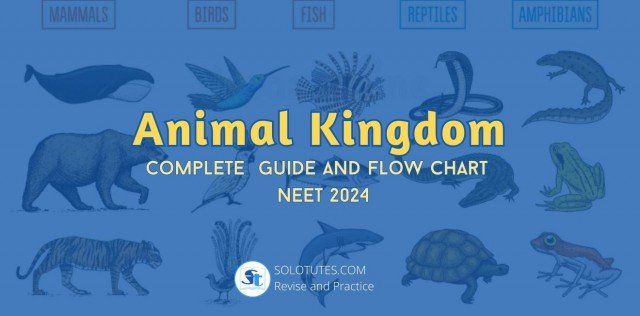
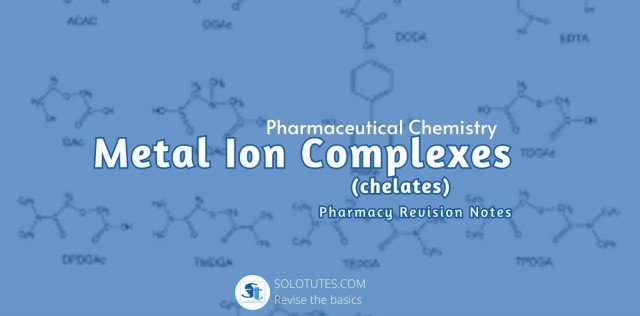




.jpg)
.png)

